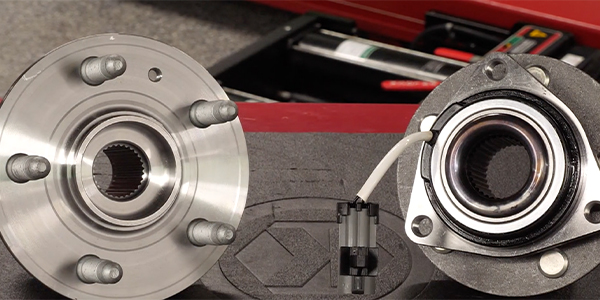CC:
Wheel speed sensors are integrated into many hub assemblies. These sensors are safety critical components and must be in top working order. A faulty sensor could result in a collision. But why is that?
Today’s vehicles are being equipped with more and more ADAS, or Advanced Driver Assistance Systems, than ever before. These systems are critical to vehicle and occupant safety, and they require precise input data from components such as the wheel speed sensors.
Something as simple as a faulty wheel speed sensor could cause the system to activate when it’s not really needed, or fail to activate when it really is needed.
There are two types of wheel speed sensors, active and passive. There is no way to visually identify which type of sensor you’re dealing with. The difference may lie how the wheel speed sensor measures the vehicle speed.
A passive sensor, well, that is a two-wire permanent magnet sensor. They produce an AC voltage signal which is generated when the tooth tone ring, or reluctor, passes by the sensor. This reluctor may be part of the CV axle or wheel bearing assembly.
Passive wheel speed sensors aren’t as accurate at lower speeds, so for systems like parallel park assist an innovative solution was needed.
Active wheel speed sensors look the same as passive sensors but they are much more accurate at lower speeds. Active sensor outputs are a digital signal, it is a DC square wave signal. And to test this type of sensor you’ll need a scan tool which can communicate with the ABS module, or a scope that can graph the digital voltage signal.
As you can see it is important to know which type of sensor you’re working with to be able to properly diagnose the fault. And if you need to replace a hub unit because of a faulty sensor it’s always a good idea to make sure the replacement hub has the same fit as the OE part. This includes the sensor wiring, mounting clips and connector, like those found on BCA HUB Assemblies. Otherwise you might get a comeback when the ABS light comes back on. I’m Andrew Markel, thank you very much.
This video is sponsored by BCA Bearings by NTN.












